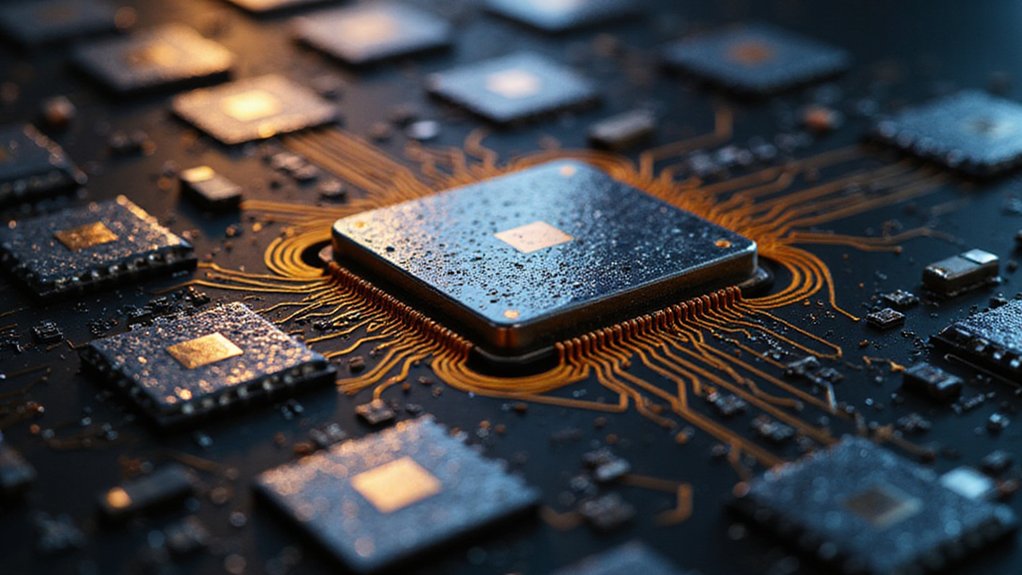Every few years, a technology company decides it can revolutionize an industry dominated by specialized Asian manufacturers—and rarely does anyone expect it to work. Block’s announcement of its Proto Bitcoin mining chip, launching in the second half of 2025, represents precisely this kind of audacious gambit against established players like Bitmain, MicroBT, and Canaan.
Block’s Proto chip gambit against Asia’s mining giants embodies tech industry hubris—bold, unlikely, yet occasionally transformative.
What makes Block’s approach particularly intriguing is its commitment to entirely domestic production—a strategy that sidesteps the increasingly Byzantine web of international trade restrictions while targeting the $3-6 billion Bitcoin mining hardware market. The company’s decision to manufacture exclusively in the United States reflects both pragmatic risk management and perhaps a touch of patriotic marketing savvy.
The Proto chip’s most distinctive feature lies not in its 3-nanometer manufacturing technology (impressive though that may be), but in its fully open-source architecture. This represents a fascinating departure from the industry’s traditional proprietary approach, potentially fostering what Block describes as “a new developer ecosystem around Bitcoin mining that has not been done at scale previously.”
Whether this collaborative development model can compete against the relentless optimization of closed systems remains an open question.
Block’s strategic partnership with Core Scientific—involving approximately 15 exahashes per second of hashrate in one of the industry’s largest known ASIC deals—provides immediate market validation. Core Scientific’s position as one of North America’s largest Bitcoin mining operators offers Block the kind of distribution partnership that transforms ambitious prototypes into market realities. Block’s collaboration with ePIC Blockchain Technologies to co-design the modular platform demonstrates the company’s commitment to leveraging specialized expertise in developing their mining infrastructure.
The technical specifications remain tantalizingly vague, with hash rates and power consumption figures yet to be disclosed. Current industry leaders achieve performances ranging from 150 TH/s to 860 TH/s, with Bitmain’s Antminer S19e XP setting benchmarks at 860 TH/s and 13 J/TH efficiency. Intel’s recent entry with their AXG Blockscale ASIC achieved 580 GH/s per chip, demonstrating that established tech giants can create competitive mining hardware even if not revolutionary in specifications.
Block’s emphasis on modularity and platform integration suggests they’re competing not merely on raw performance metrics but on ecosystem integration—a strategy that could either prove brilliantly prescient or expensively misguided. The company will need to demonstrate that their miners can effectively validate Bitcoin transactions while maintaining competitive profitability in an industry where hardware and electricity costs must be carefully balanced against cryptocurrency rewards.
The ultimate test will be whether open-source innovation can disrupt an industry built on proprietary optimization and manufacturing scale.







